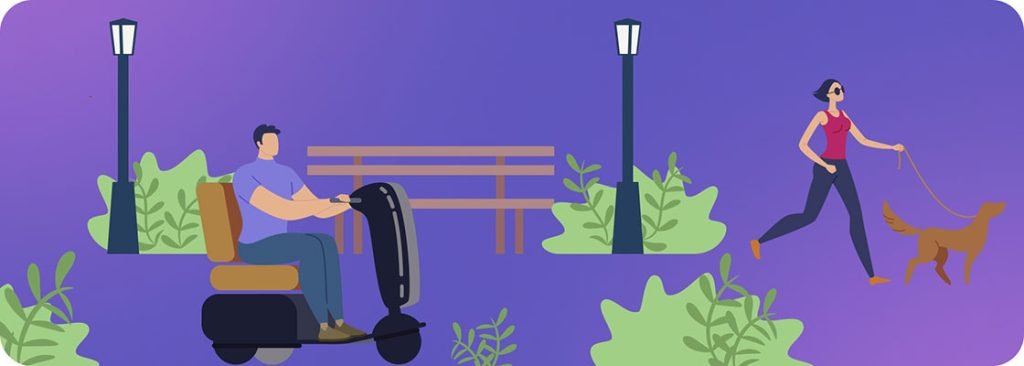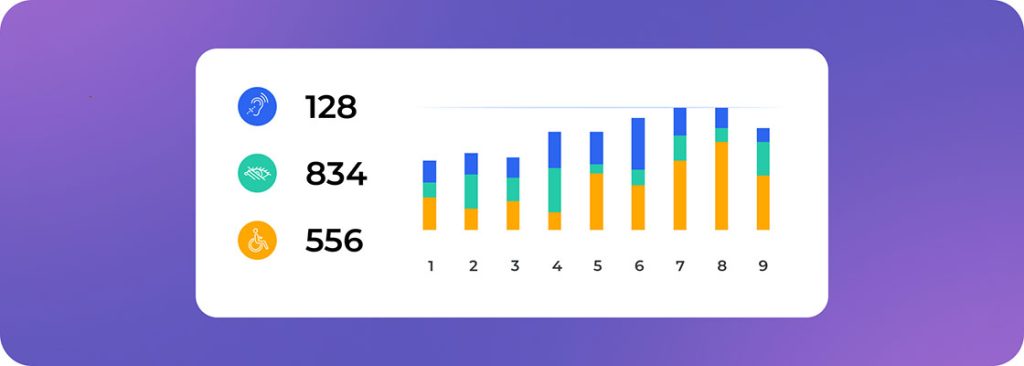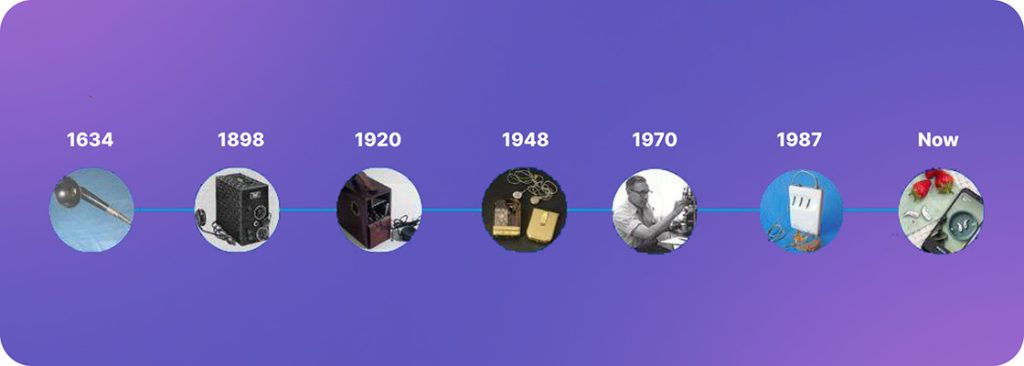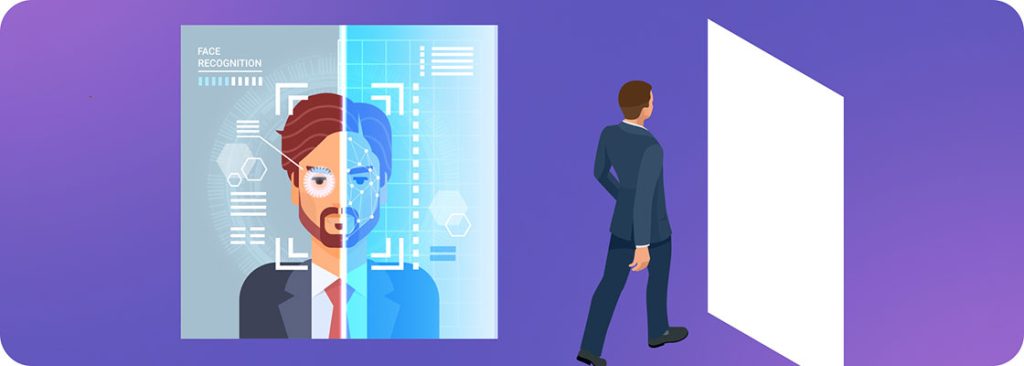Is Adaptive Technology in Accessibility the Future of Assistive Technology?
How Adaptive Tech is Supercharging Assistive Technology
Technology is a key factor in expanding opportunities and independence for people with disabilities. Adaptive devices for persons with disabilities, as well as assistive technology for everyone, offer solutions at all levels of technological complexity, supporting mobility and communication, as well as easier, more effective task handling in daily life.
Adaptive Solutions, Assistive Technology
Assistive and adaptive technologies are two types of tools or solutions that do share some common ground. However, adaptive and assistive devices are not interchangeable terms: they indicate different roles. You can find more details on different adaptive and assistive technologies in this article.
Assistive Technologies: Helpful Tools and Systems for All Abilities
These versatile, readily available assistive tools and devices can help people with various needs, and are not necessarily intended to be disability-specific. Examples of everyday products include magnifiers, used to read small text, crowded labels, or view pictures in greater details, as well as:
- Voice commands can be used by a busy professional or by someone with limited mobility to record notes, control smart home devices, operate a computer, or dictate text and messages.
- Closed captioning can be useful for people learning a new language or keeping up with a fast-paced lecture. And, they’re useful for people with hearing loss who want to access spoken dialogue and sound effects in a TV show or movie.
- Text-to-speech (TTS) converts written text to audible speech, which is an accessibility feature for people with visual and learning disabilities. However, anyone can use TTS to listen to articles or books while doing other tasks, or have digital assistants read messages aloud while driving.
Adaptive Technologies: Devices & Applications for People with Disabilities
Adaptive technologies are a branch within assistive technology. Adaptive tech includes tools specifically designed for people with disabilities, such as prosthetic limbs that work with brain-computer interfaces or mobility-enhancing exoskeletons. These technologies target specific disabilities, providing focused support.

The Impact of Adaptive Technology
Some of the far-reaching benefits of adaptive tools and systems include:
Personalized User Experience
Adaptive tools can offer adjustable settings or custom solutions to accommodate individual needs. For instance, automatic speech recognition (ASR) learns from speech patterns, and eye-tracking systems can be calibrated to a user's eye movements, setting up more comfortable interaction.
Expanded Independence
Individuals using adaptive technologies have greater control over their environment and daily activities. Adaptive tools such as AI-powered smart devices allow users with disabilities to perform tasks that would otherwise require assistance, supporting increased independence and self-reliance.
Efficiency & Productivity
AT tools like speech recognition software, or Cognitive Assistive Technologies that aid memory, organization, and focus for those with cognitive disabilities, enable efficient work and learning, benefiting workers. Employers gain diverse, empowered workforces, driving innovation and attracting top talent.

Exploring Adaptive Tools, Common and Uncommon
While there are many adaptive technology solutions, from software to simple tools, some adaptive tools and systems that are only likely to be of interest to persons with a disability include:
- Wheelchairs
Yes, even simple manual wheelchairs are considered adaptive tools. Advanced electronic wheelchairs offer customizable control systems, which can be operated through minimal movement, accommodating various levels of mobility impairments. - Eye-Tracking Systems
By monitoring user eye movement, these devices offer uses with mobility impairments a way to control and interact with computer interfaces and applications. - Screen Readers
These are available as both external tools and software applications, for use on computers and mobile phones or devices. They convert digital text into speech. Their main purpose is to announce content and functionality to people who are blind or visually impaired.
While screen readers could also be used by someone without a disability of any kind, that is not their intended function, and it rarely happens. - Adaptive Keyboards
These are built with customizable layouts and features, offering alternative and adjusted input methods. - Large Print Keyboards
Although they are not always customizable, these are a subset of the adaptive keyboard category. With oversized letters and keys and high-contrast colors, these keyboards make typing easier for users with visual and mobility impairments, as well as those with fine motor skill difficulties. - AI-Powered Smart Devices
Intelligent devices that adapt and respond to voice commands and user preferences are already a popular tool, and although some may fall into the category of assistive device, others are specifically designed to aid people with mobility or dexterity challenges to control their surroundings. For example, with these devices, users can use their voice to power on or off as well as adjust settings for lights, thermostats, and appliances. - Augmentative and Alternative Communication (AAC) Devices
These are communication tools used by individuals with speech loss or speech disabilities such as aphasia. An example of an AAC device could be a speech-generating system with picture symbols that helps convey ideas for someone cannot speak out loud. Or, AAC could mean something as low-tech and powerful as symbol cards, held up by a person with a speech impediment to express themselves. - Smart Prosthetic Limbs
While prosthetic limbs have been around for centuries, these modern versions offer intuitive control and natural movement capabilities, through the use of advanced sensors and technology. - Exoskeletons
Wearable robotic structures, these are mostly used to help a person stand and walk in spite of a severe mobility impairment or partial paralysis. - Brain-Computer Interfaces (BCIs)
These systems connect directly to the brain, where electrodes capture brain activity. Algorithms decode the neural patterns. For robotic or smart prosthetic limb activation, processed signals are then transformed into control commands, which can activate the limb according to the motion intent transmitted from the brain. Brain-spine interfaces (BSIs) have been successfully used to help a person with tetraplegia, or full body limb paralysis, due to a spinal cord injury, walk naturally once again.
Other uses of BCIs include speech synthesis, where brain signals are translated into vocal patterns, and environmental control software which can, for example, help someone turn lights on and off.
Brain-computer interfaces (BCIs), also called brain-machine interfaces or BMIs, are still a developing technology, and are currently available in various stages of development and functionality, depending on the specific application and level of invasiveness. Highly functional BCIs exist within research settings and controlled clinical trials for movement control and basic communication such as word selection. These often require surgical implantation of electrodes and other stimulation systems, but demonstrate promising results. Non-invasive BCIs using EEG technology are also used in research and some clinical settings for communication and biofeedback applications. However, their accuracy and speed limitations may make them less suitable for some more complex actions.
Limited BCIs for commercial use are available primarily as non-invasive EEG systems for gaming, meditation, and biofeedback training. Their capabilities are currently restricted compared to research-grade systems. Surgically implanted BCIs for personal and commercial use are not yet available in any stable, reliable format. Widespread accessibility and daily use of BCIs for complex tasks are also still in the future.
Brain-computer interfaces have immense potential to improve quality of life for people with motor and dexterity impairments, but they also have dangers that must be taken into consideration, including the risks inherent to brain surgery, and the possibility of a BCI malfunction affecting or injuring the brain. Ethical impact and user privacy as well as regulatory approval are also key concerns of BCI research.

Adaptive Tech: Evolving Assistive Solutions
Earlier assistive tools tackled broader functional needs; adaptive tech (AT) tailors support to fit specific disabilities. Assistive technology continues to exist alongside and synergistically with adaptive solutions. Below are a few stops along the way:
- 1829: Louis Braille develops a tactile reading and writing method for people with visual impairments. This pioneering innovation illustrates the fundamental shift towards customized solutions.
- 1898: The Akouphone, the world’s first electronic hearing aid, emerges following the 1876 invention of the telephone and its methods for managing frequencies. This significant step paves the way for future advancements.
- 1935: Talking Books are introduced: the earliest recorded audiobooks, typically recorded on 12-inch shellac discs, similar to vinyl records. They offered access to literature for visually impaired individuals, highlighting the expansion of assistive tools beyond physical limitations.
- 1948: The transistor revolutionizes hearing aids, making them smaller and more powerful.
- 1951: The Perkins Brailler typewriter empowers individuals with visual impairments to create written content independently, showcasing the growing emphasis on user agency.
- 1976: The Kurzweil Reading Machine ushers in an era of digital accessibility, converting printed text to audio for people with visual impairments and demonstrating the convergence of technology and personalized solutions.
- 1983: DynaVox, a company specializing in communication devices for individuals with speech disabilities, is founded. This signifies the dedicated development of technology tailored to specific needs.
- 2009: SMART Tables, interactive touchscreens designed for education and collaboration, are introduced. These large, flat-surface displays, typically mounted on a table-like stand, are essentially multi-touch displays similar to giant tablets, but with features and functionalities designed for specific use cases. Their introduction marks an emerging trend of integrating adaptive features into broader technologies.
- 2010s to Present Day: The proliferation of IoT (Internet of Things) devices and advancements in AI have enhanced adaptive tech, demonstrating the continuous evolution towards highly individualized support.
Advancements Shaping Accessibility
A slew of recently released and developing innovations have been targeted or leveraged towards improving accessibility. A few interesting samples include:
AI-Powered Accessibility Solutions
Machine learning algorithms are finding novel applications in accessibility. For example, AI-powered image recognition can describe visual content for users with visual impairments, while AI-driven chatbots can offer personalized assistance with daily tasks. As of now, their accuracy may be questionable, but technology moves along and improves, and we can expect better in the future.
Immersive Accessibility
Augmented and virtual reality (AR/VR) technologies are pushing the boundaries of accessibility experiences. Museums could use AR overlays with audio descriptions for visually impaired visitors. VR simulations can already offer people with mobility limitations a chance to explore new environments.
Biometric Authentication and Control
Emerging technologies like fingerprint, iris, and even facial recognition are being adapted for accessibility purposes. People with limited dexterity can use them to control smart devices via facial expressions or eye movements.
We can expect even more personalized, better integrated, and more fully immersive solutions in the future, presenting new adaptive ways for individuals with disabilities to participate fully in all aspects of life.

Getting to An Accessible Future: Adaptive Innovation
As we look to the future, the importance of ongoing research and development in adaptive technology cannot be overstated. Continuous innovation is the key to catalyzing new solutions in accessibility and inclusion for people with disabilities. Adaptive technology solutions address individual needs and disabilities, offering groundbreaking ways for people with disabilities to transcend limitations. The impact of AT extends far beyond mere assistance, affecting education, employment, social interaction, and personal independence.
Smart homes adjusting to their residents’ preferences, educational resources personalized for diverse learning styles, and workplaces equipped with assistive tools are already available. Sounds futuristic? We’re already here. We can go further. We can take the tools we have and move forward. By encouraging innovation, investing in accessibility initiatives, and advocating for inclusivity and universal accessibility, we can reach a future where adaptive technologies support everyday life seamlessly. However, true inclusivity requires collaboration. Stakeholders who must add their voices to this effort in order for it to succeed include researchers, developers, policymakers, and, importantly, the disability community itself.
This possible tomorrow holds immense promise, not just for individuals with disabilities, but for society as a whole. By prioritizing inclusivity and harnessing the power of advancing technology, we can create a world where everyone has the opportunity to reach their full potential and contribute to a richer, more diverse future.
FAQs
How can I learn more about adaptive technology options?
Assistive technology organizations, disability advocacy groups, and online databases all offer information on various tools and solutions. Consulting with occupational therapists or rehabilitation specialists can also be helpful.
Can adaptive technologies be integrated into public spaces and workplaces?
Yes, adaptive technologies can and increasingly are being integrated into public spaces and workplaces to promote accessibility and inclusion. From automatic doors to software and hardware solutions that assist with communication and mobility, these technologies make environments more navigable and usable for people with disabilities.
Are there training programs available for individuals to learn how to use adaptive technologies?
Many organizations, educational institutions, and service providers offer training programs for individuals with disabilities to learn how to use adaptive technologies. These programs are aimed at various skill levels and types of technology, with the overall goal of helping users effectively utilize these tools to improve their quality of life.
How can I contribute to a more inclusive future with adaptive technology?
Support research and development initiatives, advocate for accessible design in public spaces and workplaces, and raise awareness about the transformative power of adaptive technology. Every step makes a difference!









